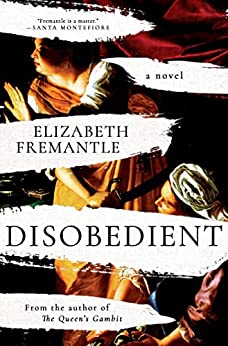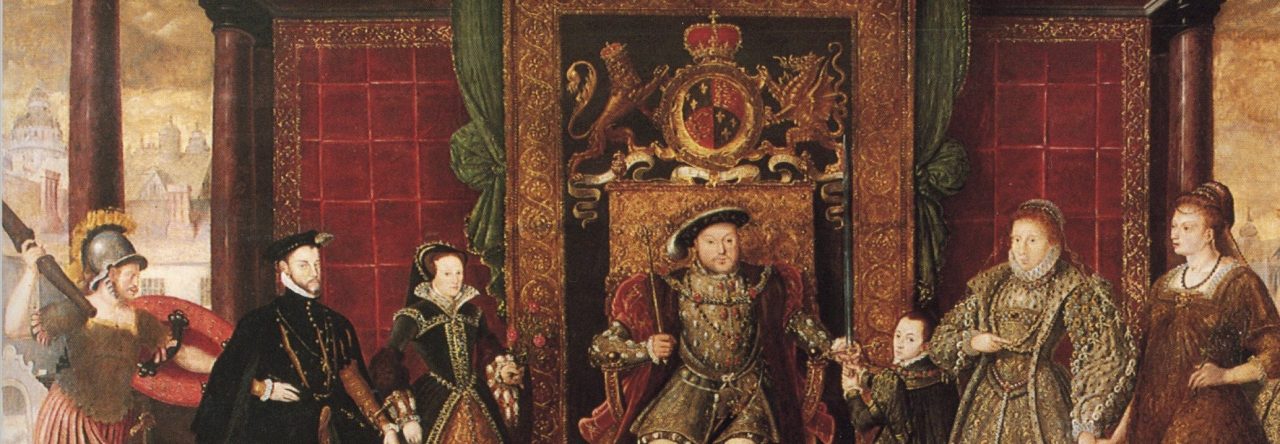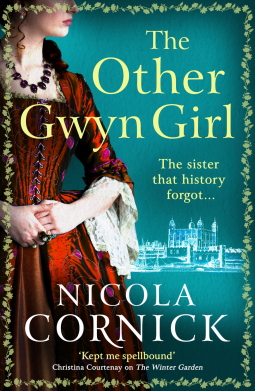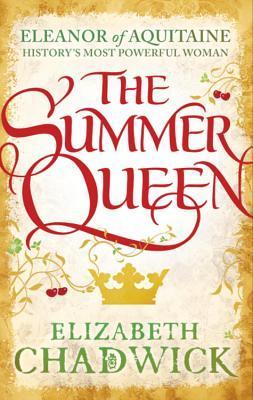 “I’ll show you what a woman can do.”
“I’ll show you what a woman can do.”
A young Renaissance woman artist is attacked by her art teacher. He claimed that she was lying. For most, this would be the end of a career and a black mark left on their reputation for the rest of their lives. Not in this case. Artemisia Gentileschi is not a woman who will stand by and let men control her or her art. In the 21st century, she is seen as an artistic genius, but in her time, she was seen as an odd woman who refused to follow the rules. Artemisia’s harrowing tale of turning tragedy into inspiration for her art, showing what a woman could do, is masterfully told in Elizabeth Fremantle’s latest novel, “Disobedient.”
This is the second novel that I have read by Elizabeth Fremantle, the first being “Queen’s Gambit.” I was thoroughly enthralled by “Queen’s Gambit,” so when I heard she wrote a new novel about Artemisia Gentileschi, I knew I wanted to read it. Before I read this novel, I did not know much about Artemisia’s story, so I was excited to learn about her struggles and triumphs.
Rome in 1611 was not a kind place for a female artist. Artemisia is the eldest daughter of Orazio Gentileschi, an artist himself. Her mother died when she was but a child and after her death, her father has become an abusive drunkard. He controls his family through fear, but Artemisia is not afraid to stand up for her siblings and her artworks, no matter the consequences. To keep his headstrong daughter in line, Orazio turns to Zita to watch over her, but Zita is not the virtuous woman that Orazio believes she is as she is a thief. Artemisia has only one friend in the world who seems to understand her, the apprentice Piero, someone who truly cares for her and wants to see her talents develop, but it is conflicted when it comes to his feelings towards other men. Finally, there is the art teacher, Tassi, who may seem like a kind soul who simply wants to teach Artemisia how to paint, but he has darker plans in mind.
Everything takes a dramatic turn for the worse when Zita leaves Artemisia alone with Tassi and he attacks her. Instead of becoming timid and accepting the marriage proposal, Tassi presents her soon after the incident, Artemisia digs into her art and paints her hatred and pain into her most famous work, Judith Slaying Holofernes. The piece is full of emotions in a bloody scene that seems rather inappropriate for a woman artist during the Renaissance, but Artemisia does not care about the criticism. She is showing the world exactly what a woman can do, and her next step, taking Tassi to court, will define her strength and determination to fight for what she believes is right. Artemisia is a survivor who thrived under unimaginable circumstances.
This book left such an impact on me. I was heartbroken, angry, and devastated for Artemisia as the events unfolded. By the end, I had to catch my breath and realize that it was a fictional retelling of her life. It is a story that will stay with me for a long time and it makes me want to study Artemisia’s life and times. If you want a heartbreaking tale full of sorrow and strength set during the Italian Renaissance, you must check out “Disobedient” by Elizabeth Fremantle.

 The year is 1671 and England is slowly recovering from the horrors of the English Civil War. King Charles II lives lavishly with his many mistresses, including the famous beauty Nell Gwyn. On the other side of London, Nell’s eldest sister Rose Gwyn is caught in the middle of a high-profile robbery that could cost her her life. In the present day, Jess Yates, a librarian and history lover, is dealing with her family’s struggles. When Jess enters Fortune Hall to help her sister Tavy, with a project, Jess begins to follow the clues to discover the connection between the great house and the Gwyn sisters. What secrets does this great hall hold and can the reputation of the Gwyn family be saved in time? The mystery of the past and the present collide in Nicola Cornick’s latest novel, “The Other Gwyn Girl.”
The year is 1671 and England is slowly recovering from the horrors of the English Civil War. King Charles II lives lavishly with his many mistresses, including the famous beauty Nell Gwyn. On the other side of London, Nell’s eldest sister Rose Gwyn is caught in the middle of a high-profile robbery that could cost her her life. In the present day, Jess Yates, a librarian and history lover, is dealing with her family’s struggles. When Jess enters Fortune Hall to help her sister Tavy, with a project, Jess begins to follow the clues to discover the connection between the great house and the Gwyn sisters. What secrets does this great hall hold and can the reputation of the Gwyn family be saved in time? The mystery of the past and the present collide in Nicola Cornick’s latest novel, “The Other Gwyn Girl.” A legendary Queen of both France and England. A wife who went on the Crusades with her first husband and chose her second husband. A fierce mother who defended her Plantagenet children no matter the cost. Eleanor of Aquitaine has been revered and reviled for centuries, some saying she was a powerful woman ahead of her time while others considered her someone who could manipulate those around her by having affairs, including supposedly with her uncle in Antioch. Her story has been told in numerous ways through different mediums throughout the centuries, but now Elizabeth Chadwick has decided to write her interpretation of Eleanor of Aquitaine’s life in a trilogy of historical fiction novels. The first in the series, “The Summer Queen,” explores Eleanor’s early years, her marriage to a young French king, and the man destined to become King of England.
A legendary Queen of both France and England. A wife who went on the Crusades with her first husband and chose her second husband. A fierce mother who defended her Plantagenet children no matter the cost. Eleanor of Aquitaine has been revered and reviled for centuries, some saying she was a powerful woman ahead of her time while others considered her someone who could manipulate those around her by having affairs, including supposedly with her uncle in Antioch. Her story has been told in numerous ways through different mediums throughout the centuries, but now Elizabeth Chadwick has decided to write her interpretation of Eleanor of Aquitaine’s life in a trilogy of historical fiction novels. The first in the series, “The Summer Queen,” explores Eleanor’s early years, her marriage to a young French king, and the man destined to become King of England. England is in desperate need of a hero. After the Covid pandemic and the Brexit debacle, England is in despair, and only one man can save the day. He does not wield a sword, but a tennis racket and his fair maiden is the badass CEO of the Rose Corp. Ace Penhelagon and Eliza Rose seem like a picture-perfect pair, but every rose has thorns that protect it from a dark past. What dark secrets do these two hide away from the flashes of the paparazzi and can love endure over fate? Olivia Hayfield’s latest novel, “Queen, King, Ace,” is a modern love story that combines the elements of the Arthurian myths with the Tudor dynasty to answer the question of what might King Arthur and Queen Elizabeth be like in the 21st century.
England is in desperate need of a hero. After the Covid pandemic and the Brexit debacle, England is in despair, and only one man can save the day. He does not wield a sword, but a tennis racket and his fair maiden is the badass CEO of the Rose Corp. Ace Penhelagon and Eliza Rose seem like a picture-perfect pair, but every rose has thorns that protect it from a dark past. What dark secrets do these two hide away from the flashes of the paparazzi and can love endure over fate? Olivia Hayfield’s latest novel, “Queen, King, Ace,” is a modern love story that combines the elements of the Arthurian myths with the Tudor dynasty to answer the question of what might King Arthur and Queen Elizabeth be like in the 21st century. The field of history for centuries has been focused on men and the struggles that mankind has had to endure for society to survive. We tend to get only a mere glimpse at the lives of women when they are next to powerful men. Some will write about women, mostly royal women, who lead extraordinary lives and left an imprint on the past. But what about those who lived ordinary lives? What about the women who lived daily, fighting to survive every obstacle? What can we learn about history through the eyes of ordinary women? Philippa Gregory has taken on the mammoth task of trying to answer these questions and more with her tome, “Normal Women: Nine Hundred Years of Making History.”
The field of history for centuries has been focused on men and the struggles that mankind has had to endure for society to survive. We tend to get only a mere glimpse at the lives of women when they are next to powerful men. Some will write about women, mostly royal women, who lead extraordinary lives and left an imprint on the past. But what about those who lived ordinary lives? What about the women who lived daily, fighting to survive every obstacle? What can we learn about history through the eyes of ordinary women? Philippa Gregory has taken on the mammoth task of trying to answer these questions and more with her tome, “Normal Women: Nine Hundred Years of Making History.” In southeastern France, there is a region called Provence, known today for its lavender fields and its vineyards. In 13th-century France, Provence would be known as the birthplace of four queens who dominated European politics. The daughters, Marguerite, Eleanor, Sanchia, and Beatrice were the daughters of Raymond Berenger V Count of Provence, and his wife Beatrice of Savoy. They would become the queens of France, England, Germany, and Sicily. While the sisters were known for their beauty, how they acted as queen consorts for their husbands cemented their legacies in history. Nancy Goldstone tells the tale of these remarkable siblings and how they changed European history in her book, “Four Queens: The Provencal Sisters Who Ruled Europe.”
In southeastern France, there is a region called Provence, known today for its lavender fields and its vineyards. In 13th-century France, Provence would be known as the birthplace of four queens who dominated European politics. The daughters, Marguerite, Eleanor, Sanchia, and Beatrice were the daughters of Raymond Berenger V Count of Provence, and his wife Beatrice of Savoy. They would become the queens of France, England, Germany, and Sicily. While the sisters were known for their beauty, how they acted as queen consorts for their husbands cemented their legacies in history. Nancy Goldstone tells the tale of these remarkable siblings and how they changed European history in her book, “Four Queens: The Provencal Sisters Who Ruled Europe.” When we think about England, we often think about a unified country with an illustrious history of wars and triumphs. However, England in the 10th century was drastically different. It was barely a country as it was newly formed through politics, but it faced the risk of elimination with a carousel of kings and Viking raiders. Some of the most notable kings of this era include Alfred, Edward the Elder, Athelstan, Edward the Martyr, and Aethelred II, but the most fascinating figures of this time were the women who were hidden in the shadows of the past. M.J. Porter uses the written record from the 10th and 11th centuries to tell the tales of these remarkable women in her book, “The Royal Women Who Made England: The Tenth Century in Saxon England.”
When we think about England, we often think about a unified country with an illustrious history of wars and triumphs. However, England in the 10th century was drastically different. It was barely a country as it was newly formed through politics, but it faced the risk of elimination with a carousel of kings and Viking raiders. Some of the most notable kings of this era include Alfred, Edward the Elder, Athelstan, Edward the Martyr, and Aethelred II, but the most fascinating figures of this time were the women who were hidden in the shadows of the past. M.J. Porter uses the written record from the 10th and 11th centuries to tell the tales of these remarkable women in her book, “The Royal Women Who Made England: The Tenth Century in Saxon England.” The royal dynasties of English history are some of the most popular in European history. We have the Normans, the Angevins, the Plantagenets, who occupied the throne for 300 years, the Scottish Stuarts who saw religious change and political upheaval, the haughty Hanovers, and the current Windsor dynasty. However, one dynasty that has captured the imagination of history nerds for centuries has been the tumultuous Tudors. In book two of Peter Ackroyd’s “The History of England: Tudors,” he explores the stories that made the Tudor dynasty so infamous.
The royal dynasties of English history are some of the most popular in European history. We have the Normans, the Angevins, the Plantagenets, who occupied the throne for 300 years, the Scottish Stuarts who saw religious change and political upheaval, the haughty Hanovers, and the current Windsor dynasty. However, one dynasty that has captured the imagination of history nerds for centuries has been the tumultuous Tudors. In book two of Peter Ackroyd’s “The History of England: Tudors,” he explores the stories that made the Tudor dynasty so infamous. Civil wars, clashes between cousins, are known to be full of battles between men on foot and horseback, with their eyes set on the throne of their desired country. Many stories of civil wars tend to leave out the women who often were left on the sidelines, ready to pick up the pieces. The story of the Anarchy is a bit different than other civil wars as one of the main figures was not a man, but Empress Matilda, the daughter of King Henry I and the rightful heiress of England facing off against the man who stole the throne from her, her cousin, King Stephen. However, it was not just Empress Matilda who defined what it meant to be a woman during the Anarchy. In her latest book, “Women of the Anarchy,” Sharon Bennett Connolly tells the stories of the mothers, sisters, and wives who defined this turbulent period that saw the end of one dynasty and the beginning of another.
Civil wars, clashes between cousins, are known to be full of battles between men on foot and horseback, with their eyes set on the throne of their desired country. Many stories of civil wars tend to leave out the women who often were left on the sidelines, ready to pick up the pieces. The story of the Anarchy is a bit different than other civil wars as one of the main figures was not a man, but Empress Matilda, the daughter of King Henry I and the rightful heiress of England facing off against the man who stole the throne from her, her cousin, King Stephen. However, it was not just Empress Matilda who defined what it meant to be a woman during the Anarchy. In her latest book, “Women of the Anarchy,” Sharon Bennett Connolly tells the stories of the mothers, sisters, and wives who defined this turbulent period that saw the end of one dynasty and the beginning of another. In the late 16th/ early 17th centuries, Scotland was chaotic and full of dynamic characters near or on the throne. People like Mary of Guise, Mary Queen of Scots, Lord Darnley, Earl of Bothwell, the four Maries, and James VI/I show how turbulent the Scottish court was to those around it. However, the stories of those who lived outside the court system and tried their best to maintain control of the country for their monarch tend to fade into obscurity. Take for example the story of Jean Gordon. A noblewoman who was married three times; to James Hepburn, Earl of Bothwell, Alexander Gordon, Earl of Sutherland, and her true love, Alex Ogilive. Jean’s story is full of heartaches, clashing clans, religious squabbles, and loyalty to one’s family, which is told in Jennifer Morag Henderson’s book, “Daughters of the North: Jean Gordon and Mary, Queen of Scots.”
In the late 16th/ early 17th centuries, Scotland was chaotic and full of dynamic characters near or on the throne. People like Mary of Guise, Mary Queen of Scots, Lord Darnley, Earl of Bothwell, the four Maries, and James VI/I show how turbulent the Scottish court was to those around it. However, the stories of those who lived outside the court system and tried their best to maintain control of the country for their monarch tend to fade into obscurity. Take for example the story of Jean Gordon. A noblewoman who was married three times; to James Hepburn, Earl of Bothwell, Alexander Gordon, Earl of Sutherland, and her true love, Alex Ogilive. Jean’s story is full of heartaches, clashing clans, religious squabbles, and loyalty to one’s family, which is told in Jennifer Morag Henderson’s book, “Daughters of the North: Jean Gordon and Mary, Queen of Scots.”